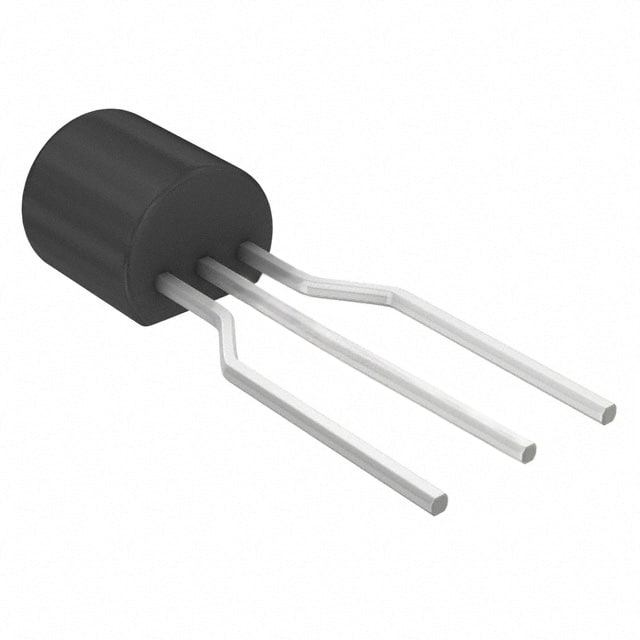Viz Specifikace pro podrobnosti o produktu.

BC556TF Transistor
Product Overview
Category
The BC556TF transistor belongs to the category of PNP bipolar junction transistors (BJTs).
Use
It is commonly used as a general-purpose amplifier or switch in electronic circuits.
Characteristics
- Low power dissipation
- High current gain
- Low noise
Package
The BC556TF transistor is typically available in a TO-92 package.
Packaging/Quantity
It is usually supplied in reels or tubes, with quantities varying based on manufacturer and supplier.
Specifications
- Collector-Emitter Voltage (VCEO): 65V
- Collector-Base Voltage (VCBO): 80V
- Emitter-Base Voltage (VEBO): 5V
- Collector Current (IC): 100mA
- Power Dissipation (PD): 500mW
- Transition Frequency (ft): 150MHz
Detailed Pin Configuration
- Emitter (E)
- Base (B)
- Collector (C)
Functional Features
The BC556TF transistor exhibits: - Amplification of weak signals - Switching capabilities - Compatibility with low-power applications
Advantages
- Low power consumption
- High current gain
- Versatile applications in amplification and switching circuits
Disadvantages
- Limited maximum collector current compared to other transistors
- Moderate frequency response
Working Principles
When a small current flows into the base terminal, it controls a larger current flowing between the collector and emitter terminals, allowing the transistor to amplify or switch electronic signals.
Detailed Application Field Plans
The BC556TF transistor finds application in various electronic circuits, including: - Audio amplifiers - Signal amplification stages - Switching circuits - Oscillators
Detailed and Complete Alternative Models
Some alternative models to the BC556TF transistor include: - BC557 - 2N3906 - 2N4403 - 2N2907
In conclusion, the BC556TF transistor is a versatile component widely used in electronic circuits for amplification and switching purposes. Its low power dissipation, high current gain, and compatibility with low-power applications make it a popular choice among electronics enthusiasts and professionals.
[Word Count: 297]
Seznam 10 běžných otázek a odpovědí souvisejících s aplikací BC556TF v technických řešeních
What is the BC556TF transistor used for?
- The BC556TF is commonly used as a general-purpose PNP transistor in various electronic circuits.
What are the typical applications of BC556TF?
- It is often used in audio amplifiers, voltage regulators, and signal processing circuits.
What are the key electrical characteristics of BC556TF?
- The BC556TF has a maximum collector current of 100mA, a maximum collector-emitter voltage of 65V, and a maximum power dissipation of 500mW.
How do I identify the pin configuration of BC556TF?
- The pinout of BC556TF is typically Emitter (E), Base (B), and Collector (C).
What are the recommended operating conditions for BC556TF?
- It is typically operated within a temperature range of -55°C to 150°C and with a maximum junction-to-ambient thermal resistance of 200°C/W.
Can BC556TF be used for switching applications?
- While it can be used for low-power switching applications, it is more commonly utilized in analog circuits due to its lower current and voltage ratings.
What are some common alternatives to BC556TF?
- Similar transistors that can be used as alternatives include BC557, 2N3906, and 2N4403.
How do I ensure proper biasing of BC556TF in a circuit?
- Proper biasing can be achieved by ensuring the base-emitter junction is forward-biased and the collector-base junction is reverse-biased.
What are the typical gain characteristics of BC556TF?
- The DC current gain (hFE) of BC556TF typically ranges from 110 to 800, depending on the operating conditions.
Are there any specific considerations for using BC556TF in high-frequency applications?
- Due to its transition frequency (fT) being relatively low, BC556TF may not be suitable for high-frequency applications above a few megahertz.
Feel free to ask if you need further details on any of these questions!

